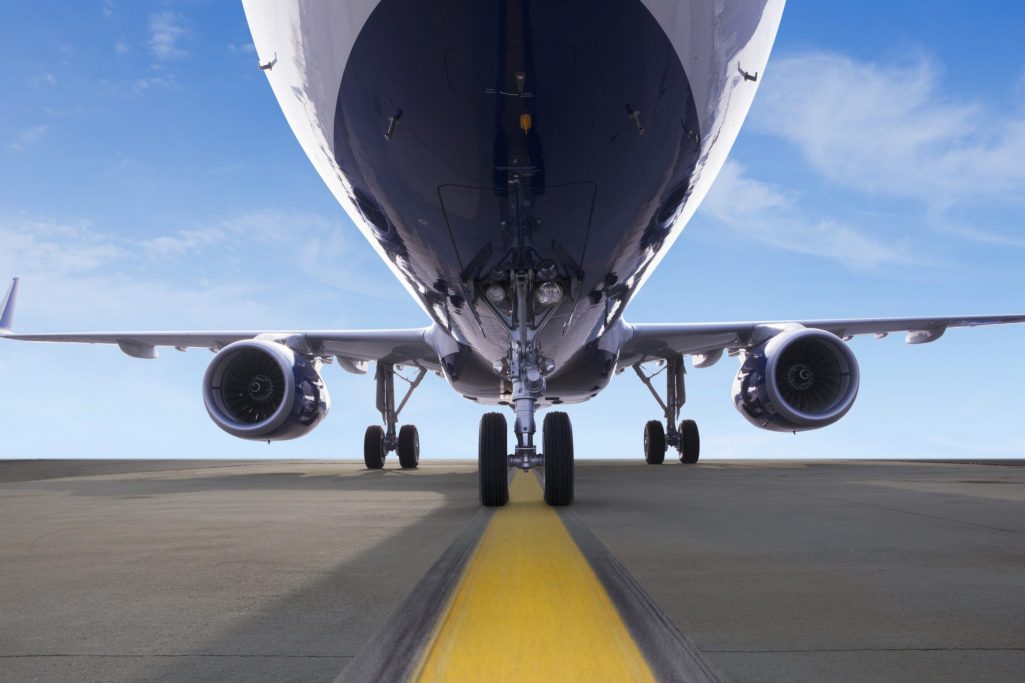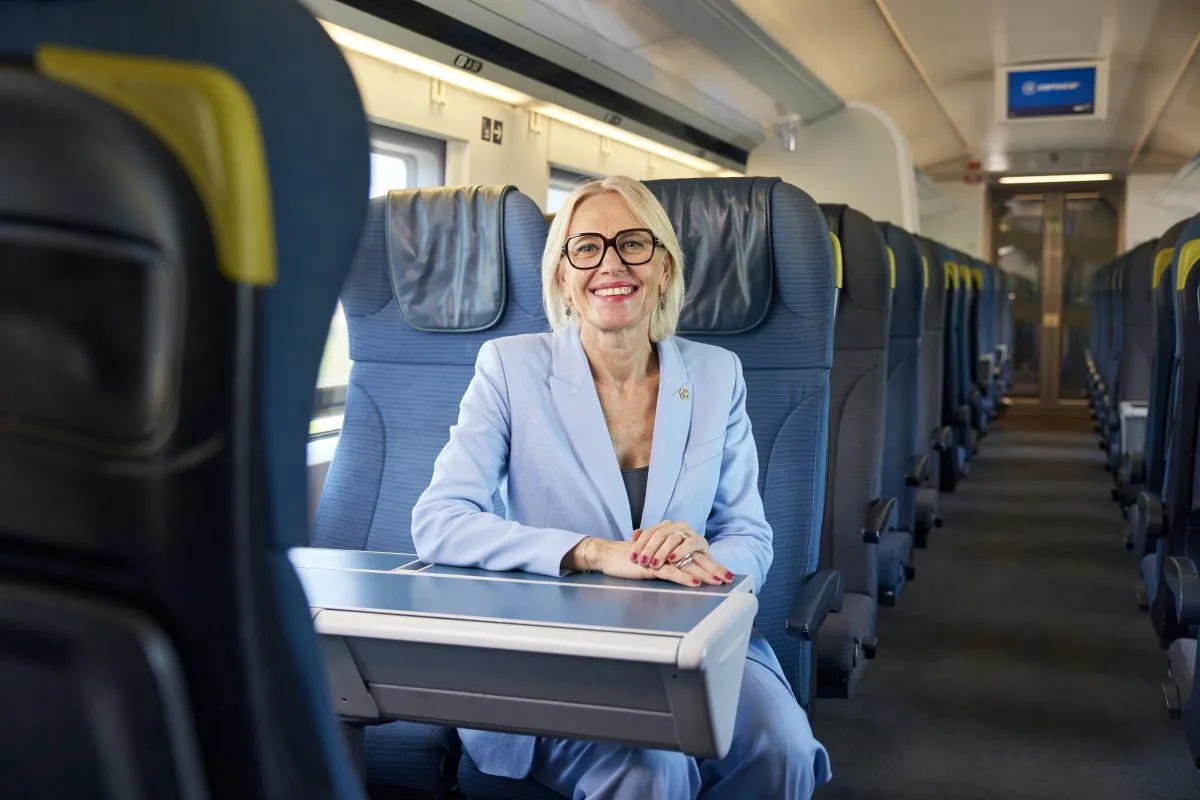JetBlue CEO Warns Flight Shaming Is Coming to the U.S.

Skift Take
JetBlue CEO Robin Hayes thinks the flight-shaming movement gaining momentum in Europe could spread to the U.S. The airline’s renewed push toward sustainability is in part informed by staving it off.
“This issue presents a clear and present danger if we don’t get on top of it,” Hayes said on Thursday during JetBlue’s fourth-quarter and full-year earnings call. “We’ve seen that in other geographies, and we should not assume those sentiments won’t come to the U.S…so it’s very important for airlines get on the front foot of this.”
The flight shaming movement began in earnest in Scandinavia last year and was further highlighted when teenage climate activist Greta Thunberg sailed across the Atlantic to bring attention to the issue. Activists believe that more travelers should opt for alternative forms of transportation to air travel in order to mitigate greenhouse gas emissions from aircraft.
Although not yet as strong in the U.S., the movement has begun to bite in Europe, and airlines have responded with a massive public-relations push to showcase their climate achievements and to earn goodwill, in KLM’s case, suggest passengers choose other forms of travel.
In the last month, JetBlue has increased its offsetting programs, and aims to be the first carbon-neutral carrier in the U.S. this year. Furthermore, the New York-based airline is powering some of its flights from San Francisco partially with biofuels. “I think it’s going to be a cost of doing business for the industry,” Hayes said.
But perhaps a more effective way for JetBlue to mitigate its effect on the environment is through its ongoing fleet renewal program. The carrier is taking delivery of more fuel-efficient jets, including Airbus A321 Neos and Airbus A220s. The newer A320-family jets are up to 15 percent more fuel efficient than the older A320-family aircraft.
But this fleet transition is not without its problems. Production delays for the A321 Neos mean that JetBlue is taking delivery of only 11 of the 14 A321 Neos it expected this year. The carrier is in talks with Airbus about potential compensation for the delays, and JetBlue has arranged to lease four aircraft temporarily to fill in the gap.
Additionally, the U.S.-EU trade spat could result in 10 percent tariffs on Airbus aircraft built in France and Germany, further adding to JetBlue’s fleet woes. Airbus’ production delays have also pushed JetBlue’s cabin reconfiguration plans out to 2021 as the airline needs to keep aircraft in service rather than taking them out of the flight line to refresh the cabins.
More positively, JetBlue expects to retire its older Embraer E190 subfleet as the Airbus A220s are delivered, CFO Stephen Priest said.
The A321 Neo production delays should not affect JetBlue’s plans to begin flights to Europe, which the carrier announced last year. The question of where in Europe remains to be settled, however. “We continue to work multiple paths around slots in a number of London-area airports,” said Joanna Geraghty, the airline’s president. “We are confident that our London plans can work in any number of airports.”
JetBlue had been exploring the possibility of flying to London’s Heathrow Airport, but takeoff and landing slots — the time when a flight lands and leaves — at convenient times are thin on the ground, and JetBlue has been vocal about not paying for slots. But it has not ruled out flying to other airports, including Gatwick, although those airports are seen as less desirable. One intriguing possibility, industry analysts say, is London City, which has restrictions on aircraft size but for which the A220 is approved.
In terms of its existing network, JetBlue faced depressed demand on its Latin America and Caribbean routes. The recent earthquakes in Puerto Rico could result in a 0.5 percent hit to the airline’s unit revenues. But JetBlue remains committed to Puerto Rico, Geraghty said, and will restore its full schedule to the island when demand returns, although she did not provide a timeline for when that may be.
JetBlue is facing increased competition in one of its focus cities, Boston, from Delta Air Lines and American Airlines, but it is planning to beef up its schedules there, in New York, and in Fort Lauderdale, its other focus cities. The carrier now has 15 daily flights between Boston and Washington Reagan National Airport and 10 daily flights between Boston and New York LaGuardia Airport. The airline, however, has reduced its flying from Long Beach, Calif., once one of its largest airports, and has dropped its Oakland, Calif. flights altogether. “Network changes include some difficult decisions to close not just routes but also [JetBlue] cities,” Geraghty said.
JetBlue turns 20 next month, and the carrier is focused on returning to its “low-cost roots,” Hayes said. The carrier has been on a three-year cost-cutting program, which has yielded $314 million in savings, and expects costs to fall by 2 percent, in the best-case scenario, or be flat this year. Much of these cost savings have resulted from increased productivity as well as changes to engine- and aircraft-maintenance contracts.
JetBlue plans to increase its capacity — the amount of passengers it could fly — by between 5.5 to 7.5 percent this year. Ancillary revenues — fees raised from such services as checked bags and seat-selection — was $34 per passenger last year, or up 14 percent from 2018. That is expected to grow; the carrier recently announced that it is raising its checked-bag and other fees as part of its Fare Options 2.0 program. Checked bags are now $35 per bag.
JetBlue’s fourth-quarter operating margin was 10.8 percent, up from 10.2 percent in 2018. The company’s pre-tax income was up slightly, from $201 million in 2018 to $220 million in the fourth quarter of 2019.





